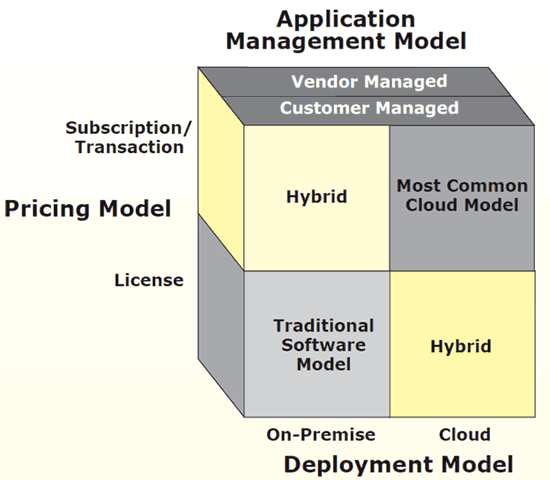For a variety of reasons, the Warehouse Management System (WMS) sector were late to the party in terms of Cloud deployment versus other areas of supply chain software.
Those factors include some major players being slow to embrace the Cloud, and concerns about time sensitive response requirements in areas such as wireless communications and materials handling systems.
Trescott Says... |
 |
| By understanding all the options – and identifying very clearly internally what is really desired in a WMS deployment – better decisions can be made. |
 |
What do you say? |
 |
| Click here to send us your comments |
|
|
|
But all that is changing rapidly. Concerns about response times have largely faded away, even in complex distribution operations, and if needed local "agents" can be deployed address any latency concerns.
Softeon is seeing about 65% of new WMS implementations being Cloud-based, with that number continuing to head higher, though there are likely to be some "on-premise" deployments for some time.
The benefits of Cloud deployments – reduced implementation costs, faster time to value, reduced system management requirements, portability, etc. – have been well documented, and I will not cover them here.
All that said, despite the rapid growth of supply chain technology delivered in in the Cloud generally and for WMS specifically, there are often still a lot of uncertainties among potential adopters. I see it time after time.
To sort out the options, the following discussion may help.
There are really three dimensions to consider in WMS implementation:
Deployment Model: Will the software be deployed in the Cloud, or installed inside the four walls of the enterprise (i.e., on-premise)?
Pricing Model: Will the software be acquired under a traditional upfront license (and generally then annual support fees), or through some type of subscription/transaction-based pricing?
Management Model: Will the acquiring company manage the application however it is deployed or will the software vendor do this work, under what is generally called "managed services?"
These options are nicely illustrated in the graphic below, first developed, we believe, by SCDigest editor Dan Gilmore almost 20 years ago. While the model really applies to any type of supply chain software, it seems to really resonate when I talk with potential WMS buyers.

Source: SCDigest
The traditional WMS software model, of course, involves an on-premise deployment with upfront license pricing, as indicated in the lower left quadrant. Cloud deployment are generally delivered with subscription pricing, as indicated in the top right quadrant.
But other combinations are possible. For example, some but not all WMS software vendors will support on-premise deployment, but with subscription-based pricing. Other vendors can deliver in the Cloud but sell with upfront license pricing, as shown in the two remaining quadrants.
And for any of the options, a potential WMS user needs to decide if they want to manage the application over time or have the WMS software company handle that, as shown in the top section of the graphic. A vendor managed service approach is especially popular for Cloud deployments.
Potential WMS adopters should understand these decisions and make sure which options WMS vendors support. In some cases, hybrid options are possible. For example, one US 3PL firm has a number of sites deployed in the Cloud, but for perceived bandwidth issues initially had three facilities running on-premise systems. It later easily migrated one of those on-premise sites to Cloud.
There is actually yet one more dimension not shown on the chart. That involves whether the WMS in the Cloud will be delivered in true Software as a Service (SaaS) model, in which all customers run off the same server farm and have identical software available, versus WMS delivered in a so-called "private Cloud" deployment, which generally would handle any number of a company's distribution centers but no one else's.
Today, most companies clearly favor private Cloud WMS deployments.
By understanding all the options – and identifying very clearly internally what is really desired in a WMS deployment – better decisions can be made.
The key is what you are really trying to achieve. To quote one recent WMS prospect who summarized why the company preferred a Cloud solution: "We are in the food distribution business, not the WMS business.
The key though is finding a WMS firm that offers all the options.
|

|
Supply Chain Comment Author
Dinesh Dongre
VP Product Strategy
Softeon
|
| |
Any reaction to this Expert Insight column? Send below.
Your Comments/Feedback
|
|